Maya News Updates, 2006, No. 38: New Maya Acquisition at the Los Angeles County Museum of Art (with Addendum)
Recently the LACMA acquired a well-known Classic Maya ceramic vessel painted by a master scribe-painter in so-called Codex Style. The vessel was a gift of the 2006 Collectors Committee. The following informative text comes from the Los Angeles County Museum of Art website (URL: www.lacma.org) (edited by Maya News Updates):
Latin American Art / Inventory Number M.2006.41
Mexico, Southern Campeche
Drinking Vessel, 600-800 A.D.
Ceramic with cream, red, and black slip
Height: 5 3/8 in. (13.65 cm); Diameter: 5 1/8 in. (13.02 cm)
Mexico, Southern Campeche
Drinking Vessel, 600-800 A.D.
Ceramic with cream, red, and black slip
Height: 5 3/8 in. (13.65 cm); Diameter: 5 1/8 in. (13.02 cm)
"Elegantly painted ceramic vessels constituted the premier form of artistic expression during the Late Classic period (550–850 AD) of ancient Maya civilization, and none were more beautifully painted than those known as Codex Style. Named for their resemblance to the Maya codices, or painted books, codex style ceramics such as this drinking vessel depict highly esoteric scenes describing the fundamental concepts of Maya religious belief and practice and the special role of kings as participants in the supernatural realm. These concepts are embedded within a layered matrix of complex imagery and hieroglyphic writing that describe the ritual actions of rulers, who engaged with ancestors and supernatural beings in order to maintain the delicate balance of the cosmos.
Codex Style ceramics were produced for a very brief period in a restricted region of the Maya lowlands, encompassing southern Mexico and the northeastern corner of the Petén, Guatemala. Vessels are typically covered with a cream colored ground; red slip adorns the rim and basal bands and the imagery is painted with a fine black line. The figures portrayed on this vessel are rendered with the characteristic whiplash line that constitutes the most refined Maya painting on both ceramics and murals.
The content of Codex Style imagery is almost exclusively mythological or cosmological, and this vessel, acknowledged as the work of an extraordinary artist known as the Metropolitan Master, is no exception. The scene shows three sinister and otherworldly beings with both animal and human characteristics. They represent wayob’, the companion spirits of Maya rulers. These composite beings with their supernatural attributes share in the consciousness of the person who owns them, coming to life when the person is asleep in order to roam the world. Wayob’ may take the form of animate or inanimate beings, but are commonly depicted on Maya ceramics as powerful forest creatures.
On this vessel, the wayob’ include a plump toad wearing a jade bead necklace, a dashing jaguar with knotted scarf and deer antler, and a bearded serpent with a deer ear and a young man emerging from his opened jaws. The creatures, whose names appear in the brief texts adjacent to their images, signal a complex relationship between the supernatural realm and lineage ancestors, the powerful beings contacted by the living king to sustain the well-being of the human community. The vertical text describes the vessel as one used to drink cacao (chocolate), which was first cultivated by the Maya and whose consumption was the prerogative of royalty.
This vessel is recognized as one of the finest known in the Codex Style tradition. It provides complementary imagery to the rare fluted cylinder vessel (M.2005.131) in the pre-Columbian collection; together they present extraordinary insights into ancient Maya religious belief and royal performance in the words and images of the artists themselves."
Further comments by Maya News Updates: This important vessel was for instance illustrated in Michael D. Coe's 1978 "The Lords of the Underworld" (No. 3) and Francis Robicsek and Donald M. Hales' 1981 "The Maya Book of the Dead: The Ceramic Codex" (Vessel No. 33). The vessel has several short hieroglyphic texts.
The Standard Dedicatory Formula (SDF) on ceramics (or PSS, Primary Standard Sequence) can be transcribed as yu-k'i?-b'i ta-'IXIM? TE'-le ka-wa K'UH-cha-TAN-WINIK for yuk'ib' ta iximte'el [ka]kaw k'uh[ul] chatan winik "(it is) the drink-instrument for Iximte'-derived cacao of the Holy Man of Chatan". The three way characters are each named and associated through the uway statement with an ajaw "lord, king (probably lit. speaker)" title, providing a relationship between the way characters and (lines of successive) lords at different sites. The first is named Kilich(?) (?) Amal "Pure(?) (?) Toad(?)", who is the way of (?)te' Ajaw; the second is named K'intanal B'olay(?) "Sun-chested Feline", who is the way of K'uh[ul] Kan[al] Ajaw B'ak[ul]. The third is named Xukub'(?) Chih Cham(?), who is the way of K'uh[ul] Kan[al] Ajaw B'ak[ul]. As no personal names are mentioned one may conclude that two different way are associated with the holy lord (k'uhul ajaw) of Kanal (probably Calakmul at this time period). The final term b'ak[ul] may be a referent to "young one, child" (Yucatec Maya, [aj] b'aak "young child [niño, muchacho]").
The possible owner of the vessel was a K'uhul Chatan Winik, or Holy Man/Person of Chatan. This Chatan was an important center or political entity somewhere in the Greater El Mirador Basin. K'uhul Winik of this polity are mentioned from the Early Classic into the Late Classic at for instance Calakmul, Tikal, and a large selection of unprovenanced Codex Style ceramics. One provenanced Codex Style ceramic example occurs at Nakbe. Perhaps the people of Chatan even survived into the Colonial period, as just north of Lake Peten there was a group named the Ah Chata (Boot 2005 "Continuity and Change in Text and Image at Chichen Itza", Appendix B, pp. 505-516).
None of the lords mentioned on this vessel have a personal name, including the owner, they are just referred to through a generic ajaw or winik title. How the relationship between the way, the lords with which they were associated, and the owner of the vessel itself worked has to be researched in more detail and at greater length than this note permists.
Addendum (September 24, 2004): As Justin Kerr informs me, the vessel now at LACMA was photographed as a rollout in 1976 and before moving to LACMA was exhibited at the Brooklyn Museum (personal communication, September 22, 2006).
The following information of this vessel can be found at the website of the Brooklyn Museum of Art, New York (information may be removed in the near future):
Cylindrical Codex-Style Vase. Maya artist, circa a.d. 550–850. Probably Northern Peten, Guatemala. Ceramic, black and red pigment on cream slip. Brooklyn Museum, Anonymous Loan, L80.50.
The above photograph is an edited version of the B&W photograph as posted at the Brooklyn Museum information page. The vessel was part of the exhibition "Living Legacies".

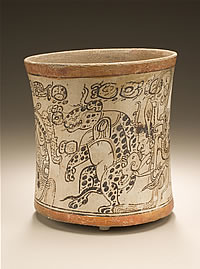
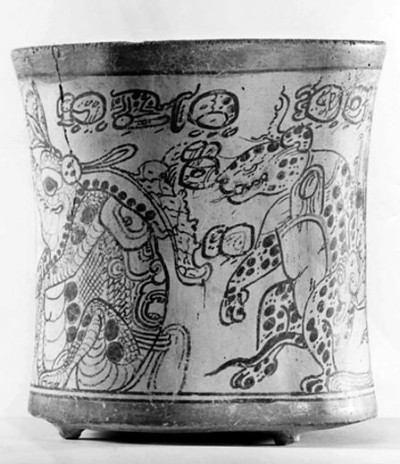






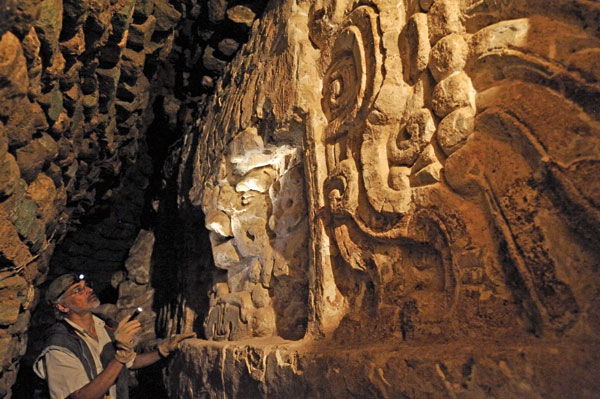
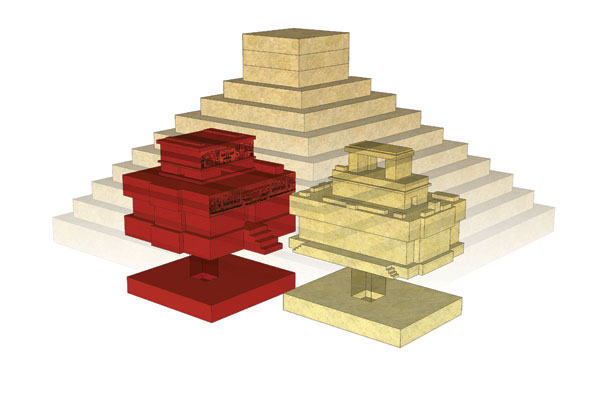
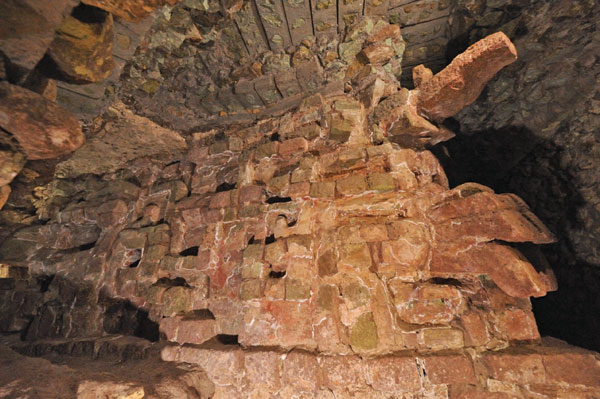





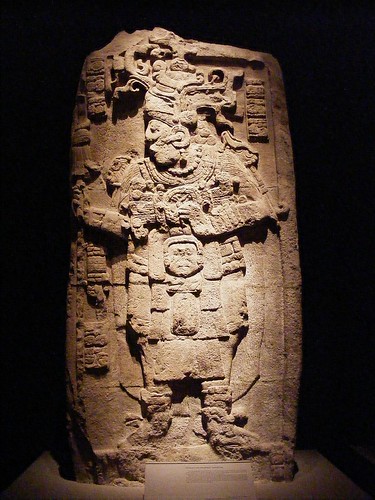


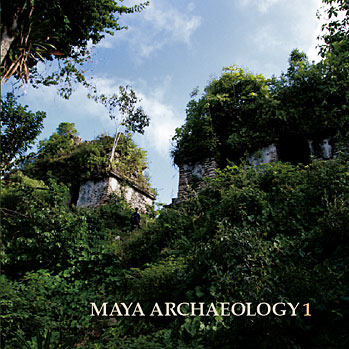









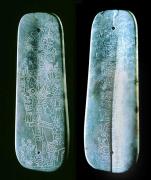
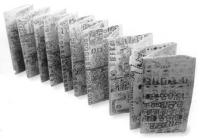

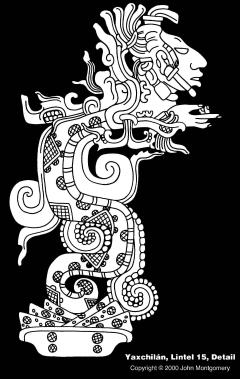

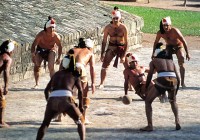


2 Comments:
I have visited this website and its well and good.its contains lots of information about work from home
WORK FROM HOME
Pre-Columbian art often depicts images of toads and snakes, creatures identified by scholars as being symbols of fertility and rebirth.
Why is this so?
According to R. Gordon Wasson...
"we strike a vein that must go back to the remotest times in Eurasia, to the Stone Age: the link between the toad, the female sex organs, and the mushroom, exemplified in the Mayan languages and the mushroom stones of the Maya Highlands. Man must have brought this association across the Bering Strait (or the land bridge that replaced it in the ice ages) as part of his intellectual luggage.”
Post a Comment
<< Home